
Roots
To truly comprehend the profound relationship between braids and cultural identity, one must journey back through the annals of human expression, tracing the earliest whispers of artistry on the scalp. Hair, in its myriad forms, has always been more than mere biological filament; it serves as a canvas, a marker, a living archive of collective memory and individual story. The very act of gathering strands, meticulously arranging them into patterns, speaks to a human inclination towards order, beauty, and communication. This exploration begins at the foundation, delving into how ancient hands first shaped hair into forms that spoke volumes without uttering a single sound.
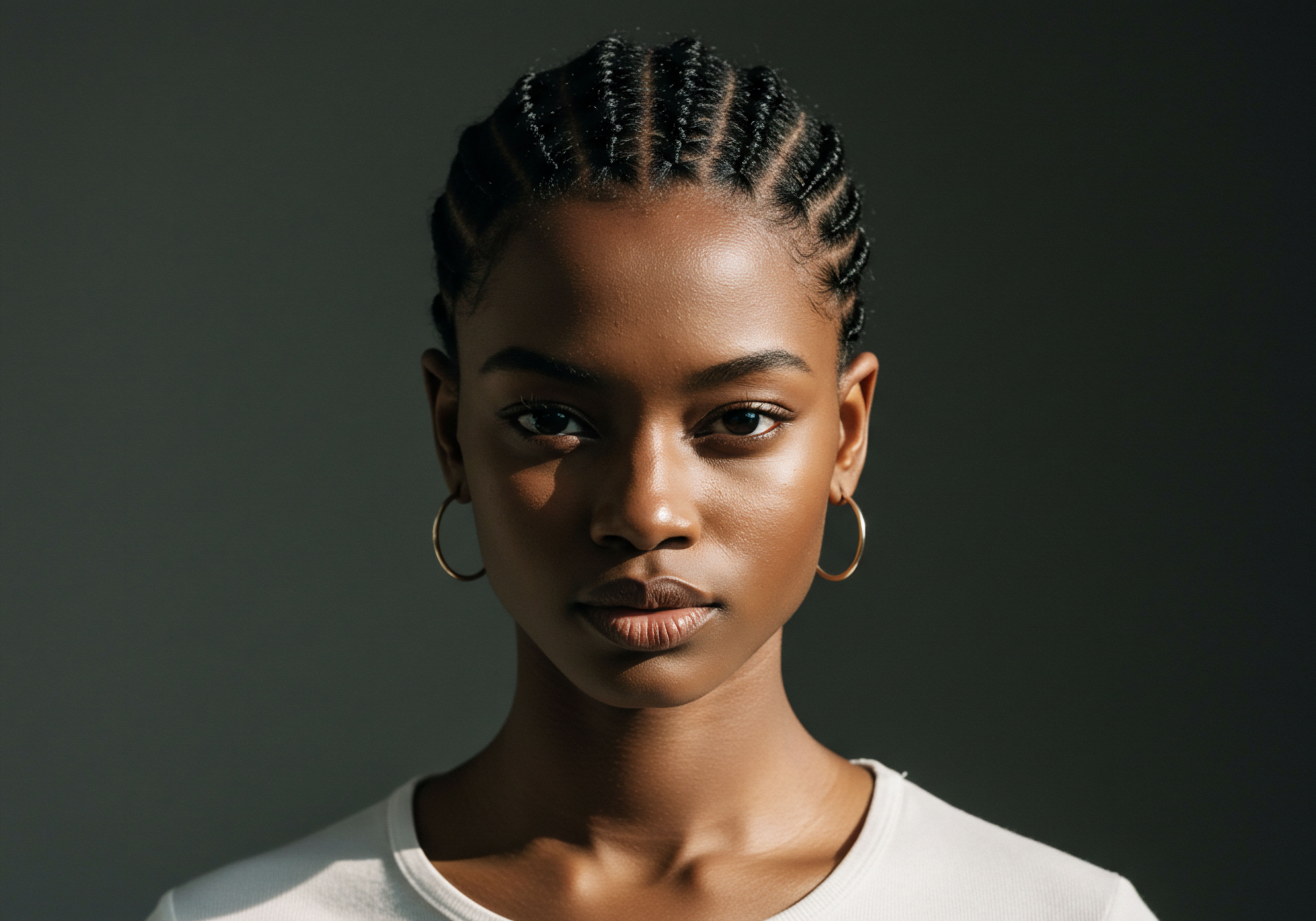
Early Expressions of Identity
The genesis of hair braiding reaches back into deep antiquity, with archaeological evidence pointing to its presence thousands of years before recorded history. A compelling example arises from rock paintings in the Sahara Desert, depicting a woman adorned with cornrows, a depiction dating back to approximately 3500 BCE. This ancient image suggests that elaborate hair styling was not a fleeting trend but an established practice with significant social dimensions. In these early societies, the intricate patterns sculpted onto the head often served as a visual language, communicating an individual’s standing within their community.
Braids, far from being simply decorative, served as an early form of nonverbal communication, signaling an individual’s place within their community.
Across the vast African continent, a diverse array of braiding styles developed, each carrying specific meanings. These styles could convey:
- Age ❉ Different patterns marked the passage from childhood to adolescence, and then to adulthood, with specific styles often reserved for rites of passage.
- Tribal Affiliation ❉ Distinctive braid patterns often identified a person’s specific ethnic group or tribe, acting as a visual identifier in diverse communities.
- Marital Status ❉ Whether single, engaged, or married, an individual’s hair could openly display their relationship status.
- Social Rank ❉ The complexity and adornment of braids often indicated wealth, power, or leadership status within a societal structure.
For instance, the Fulani people of West Africa are recognized for their finely braided cornrows, often accented with beads or cowrie shells. Similarly, the Himba people of Southwest Africa traditionally wear thick braids coated with a mixture of ochre and butterfat, a practice that signifies their cultural adherence and connection to their environment. These traditions illustrate a deep-seated connection between hair and communal identity, where hair is a living billboard of one’s personal and collective story.

What Did Ancient Egyptians Tell Through Their Braids?
The ancient Egyptians, a civilization renowned for its sophisticated artistry and symbolism, placed immense value on hair. From around 3100 BCE, braided hairstyles were not only a mark of beauty but also a significant indicator of social status and religious conviction. Both men and women, particularly those of high standing, wore elaborate wigs adorned with plaits and braids, often embellished with precious jewels, beads, and gold.
The ability to maintain such elaborate styles or afford the wigs themselves was a clear indicator of wealth and leisure. For example, art historian Gay Robins’ examination of Egyptian tomb chapels reveals how hair depictions reflected social stratification. Elite adult men sported wigs above shoulder level, with the most distinguished displaying styles arranged in curls or braids.
Their sons, of lesser status, were often shown with shorter wigs or shaven heads. This visual hierarchy underscores how hair, and specifically braids, served as a deliberate and powerful tool for defining and reinforcing social order.
Beyond social markers, ancient Egyptians also believed that braiding hair could ward off ill spirits and bring good fortune. This spiritual dimension further elevates braids beyond mere aesthetics, embedding them into the very fabric of belief systems and daily protection.
| Civilization Ancient Africa |
| Common Braid Styles Cornrows, Fulani braids, Himba braids |
| Cultural Significance Age, tribe, marital status, social rank, communication, spirituality |
| Civilization Ancient Egypt |
| Common Braid Styles Braided wigs, plaits, sidelock of youth |
| Cultural Significance Social status, wealth, religious belief, protection from spirits |
| Civilization Indigenous Americas |
| Common Braid Styles Various tribal braids, two side braids |
| Cultural Significance Identity, spirituality, personal growth, community, communication |
| Civilization Viking Culture |
| Common Braid Styles Intricate braids, practical styles |
| Cultural Significance Social status, marital status, clan allegiance, battle readiness |
| Civilization Hair styles across ancient cultures provided visual cues about individuals and their societies. |

Ritual
As we move beyond the foundational historical presence of braids, a deeper look reveals how the practice itself transformed into something far more significant than a mere cosmetic application. The hands that shaped the strands often belonged to family members, community elders, or trusted stylists, turning a styling session into a profound cultural ritual. This shared experience, often lasting hours, became a conduit for passing down stories, wisdom, and heritage, forging bonds that stretched across generations. It is in these moments of communal creation that the spirit of braids truly comes alive, embodying a shared purpose and connection.

Communal Practices and Knowledge Sharing
In many African societies, the act of braiding hair was, and remains, a deeply communal practice. It was not a solitary activity performed in front of a mirror, but a social gathering where family members and community elders participated. These sessions provided a space for laughter, conversation, and the exchange of life lessons.
Stories of ancestors, tribal lore, and practical advice on everything from child-rearing to farming were recounted, embedding cultural memory into the very rhythm of the braiding process. This oral tradition ensured that cultural norms, historical events, and collective values were transmitted from one generation to the next, with each braid becoming a repository of shared knowledge.
The act of braiding hair often transcended mere styling, serving as a powerful social ritual for transmitting cultural heritage and reinforcing communal ties.
The time dedication required for elaborate braided styles also reinforced the value of community. For instance, box braids, originating in South Africa around 3500 BCE, could take up to eight hours to create. Such a time commitment necessitated collaboration and patience, further solidifying social connections. The process itself became a testament to mutual support and collective identity.
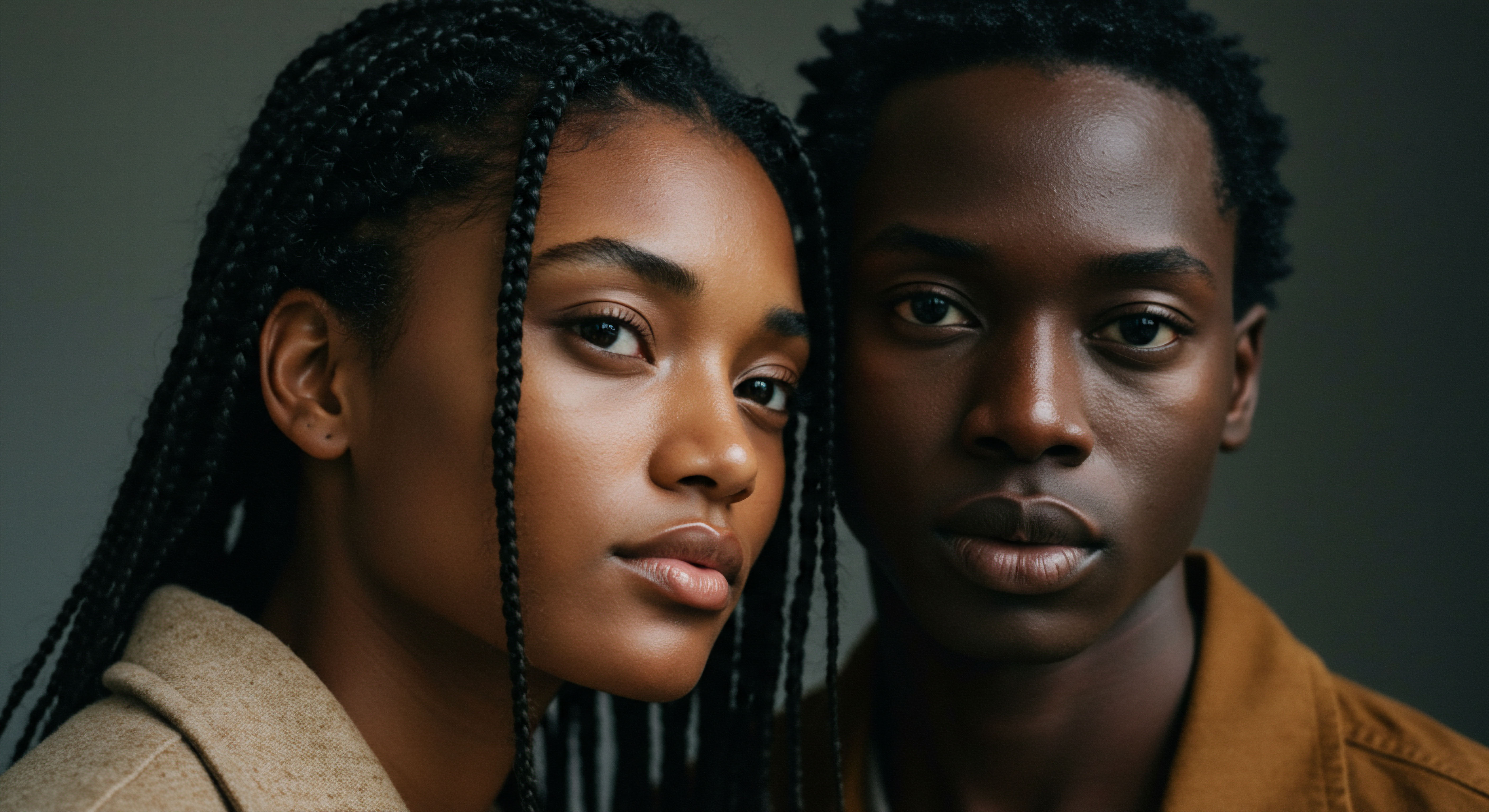
Braids as Covert Communication
Perhaps one of the most poignant examples of braids acting as a form of ritualistic communication appears during the transatlantic slave trade. Stripped of their languages, traditions, and often their very names, enslaved Africans found ways to preserve their heritage and resist oppression through their hair. Cornrows, with their roots deep in African traditions, became a covert medium for conveying messages.
Enslaved individuals would carefully arrange cornrows into intricate patterns that served as secret maps, outlining escape routes or pointing towards safe houses along paths like the Underground Railroad. Beyond cartography, these tightly woven braids also concealed small objects, such as seeds or tools, which could aid in survival after escape. This extraordinary adaptation highlights the ingenuity and resilience of those who, even in the most dire circumstances, found a way to maintain agency and communicate hope through their cultural practices.
This historical practice underscores how braids were not only a means of physical survival but also a profound act of psychological preservation. They symbolized a quiet defiance, a refusal to relinquish identity even when faced with extreme dehumanization. The ritual of braiding became a silent, yet powerful, declaration of self and a lifeline to freedom.

A Legacy of Resistance
The practice of using braids for covert communication continued in various forms of resistance movements across different cultures. In Latin American indigenous communities, for example, braids have also functioned as a system of communication. In some Mazatec communities in Mexico, the way a woman wears her braids can signal her marital status ❉ both braids backward might mean she is single, one braid back and one forward indicates engagement, and both braids forward means she is married. This demonstrates a wider pattern of hair serving as a nuanced language, capable of conveying complex social information within specific cultural contexts.
The persistence of these communication systems, often born out of necessity and a desire to preserve cultural autonomy, speaks volumes about the enduring power of braids as a tool for identity and survival. They stand as a testament to human creativity in the face of adversity, transforming a styling practice into a living archive of shared experience and a silent declaration of belonging.
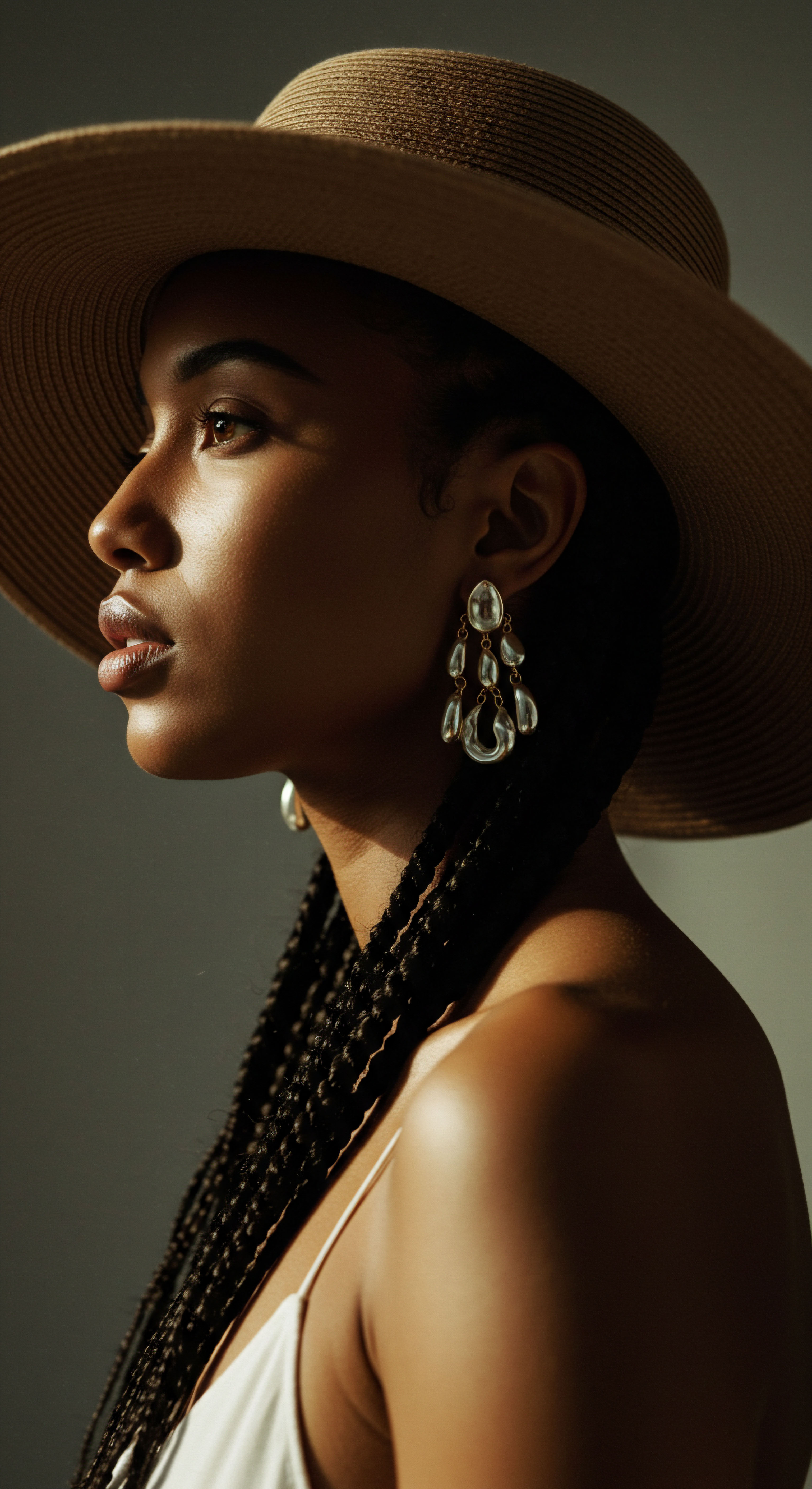
Relay
Moving beyond the foundational historical and ritualistic aspects, we arrive at the present-day resonance of braids, where their significance is relayed through contemporary social discourse, legal frameworks, and individual acts of self-determination. The journey of braids, from ancient symbols of status to modern declarations of identity, is not a simple linear progression; it is a dynamic interplay of historical memory, scientific understanding of textured hair, and the ongoing push for cultural recognition. Here, the story of braids becomes deeply intertwined with concepts of belonging, systemic discrimination, and the celebration of unique beauty in a world that has often sought to standardize it.

How Do Braids Speak to Modern Identity and Discrimination?
In contemporary society, braids, particularly within Black and mixed-race communities, have taken on renewed significance as symbols of pride, heritage, and resistance against Eurocentric beauty standards. The natural hair movement, gaining prominence in the early 2000s, has championed the wearing of natural textures and protective styles, including braids, as an assertion of cultural identity. This shift is not merely aesthetic; it is a profound psychological and social act, challenging long-standing biases that deemed textured hair as “unprofessional” or “unruly.”
Despite this movement towards acceptance, discrimination based on hair remains a pervasive issue. Research consistently shows that Black women, especially, face negative perceptions and unfair treatment in educational and professional settings because of their natural hairstyles. For example, a 2023 workplace research study revealed that Black women’s hair is 2.5 times more likely to be perceived as unprofessional compared to white women’s hair. Furthermore, approximately two-thirds of Black women reported changing their hair for job interviews, with 41% specifically altering their curly hair to a straight style.
Contemporary society continues to grapple with hair discrimination, where natural braided styles, particularly for Black women, are often unjustly labeled unprofessional, impacting career and educational opportunities.
This discrimination is not just a matter of appearance; it carries measurable social and economic consequences. Studies indicate that over 20% of Black women between the ages of 25 and 34 have been sent home from work due to their hair. Moreover, a quarter of Black women believe they have been denied employment opportunities because of their hair, a figure that rises to one-third for women under 34. The psychological impact is also significant, with research showing that hair-related discrimination can contribute to internalized racism, anxiety, chronic stress, and a sense of cultural disconnection.

The CROWN Act ❉ A Legal Counterpoint
In response to this systemic discrimination, legislative efforts like the CROWN Act (Creating a Respectful and Open World for Natural Hair) have emerged. California led the way in 2019, becoming the first state to enact a CROWN law, prohibiting discrimination based on hair texture and protective styles like braids, locs, and twists. As of September 2024, 27 states and Washington, D.C. have passed similar legislation, with ongoing efforts for a federal version.
The CROWN Act represents a crucial step in acknowledging and rectifying historical and ongoing biases against textured hair. Its passage reflects a growing societal recognition that hair, particularly for Black individuals, is not merely a stylistic choice but an inherent part of cultural identity and self-expression. While legal protections are vital, the ongoing prevalence of hair discrimination highlights the deeper societal work still required to truly dismantle Eurocentric beauty standards and embrace the full spectrum of human hair diversity. The struggle for hair acceptance is a significant battle in the larger fight for racial equity and the freedom of self-definition.
Consider the broader implications of hair as a social marker. Anthropologists and sociologists have long studied how hair conveys messages about morality, sexual orientation, political persuasion, religious sentiments, and socioeconomic status across cultures. This body of work confirms that hair is a potent symbol of self and group identity, a powerful mode of self-expression and communication. When a society legislates against certain hair expressions, it is, in essence, legislating against identity itself.
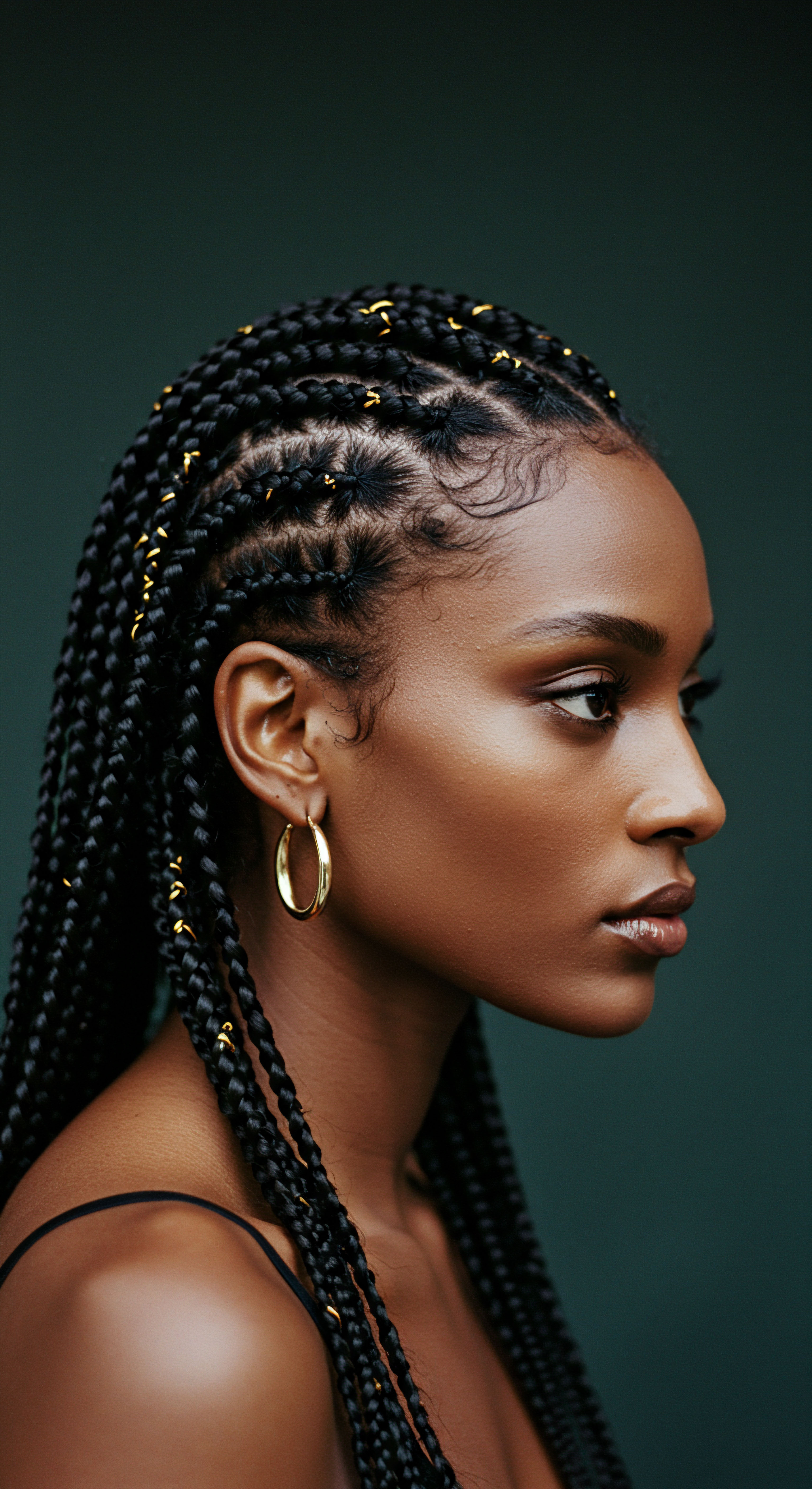
Beyond Aesthetics ❉ The Science of Protective Styling
From a hair wellness perspective, braids hold a unique position as a primary protective style for textured hair. Understanding the scientific rationale behind their use adds another layer to their cultural importance. Textured hair, characterized by its varied curl patterns and density, can be prone to dryness and breakage if not cared for appropriately. The coiled structure of hair strands makes it more susceptible to tangling and environmental damage.
Protective styles like braids minimize daily manipulation, shield the hair from harsh environmental elements, and help retain moisture. By keeping the hair tucked away, the ends, which are the oldest and most fragile parts of the hair shaft, are guarded against friction and stress. This reduction in physical stress can contribute to improved length retention and overall hair health.
The practice of braiding, therefore, aligns with a deep understanding of hair physiology, a wisdom passed down through generations. It is a testament to an ancestral knowledge of hair care that predates modern cosmetic science, demonstrating a practical application of cultural practice for physical well-being.
A closer look at the benefits reveals why these styles have endured:
- Reduced Manipulation ❉ Braids significantly limit daily combing, brushing, and styling, which can cause mechanical damage to delicate strands. This allows hair to rest and minimizes breakage.
- Moisture Retention ❉ When properly moisturized before braiding, the enclosed nature of the style helps to seal in hydration, guarding against environmental dryness and maintaining elasticity.
- Length Preservation ❉ By protecting the ends of the hair, braids help to prevent split ends and breakage, contributing to visible length retention over time.
- Scalp Health ❉ While some styles can be tight, well-installed braids allow for scalp access for cleansing and oiling, promoting a healthy environment for hair growth.
The enduring popularity of braids, from their ancient origins to their modern manifestations, speaks to their adaptability and their deep-seated connection to identity, communication, and practical hair care. They remain a vibrant, living testament to the resilience and creativity of cultures across the globe.
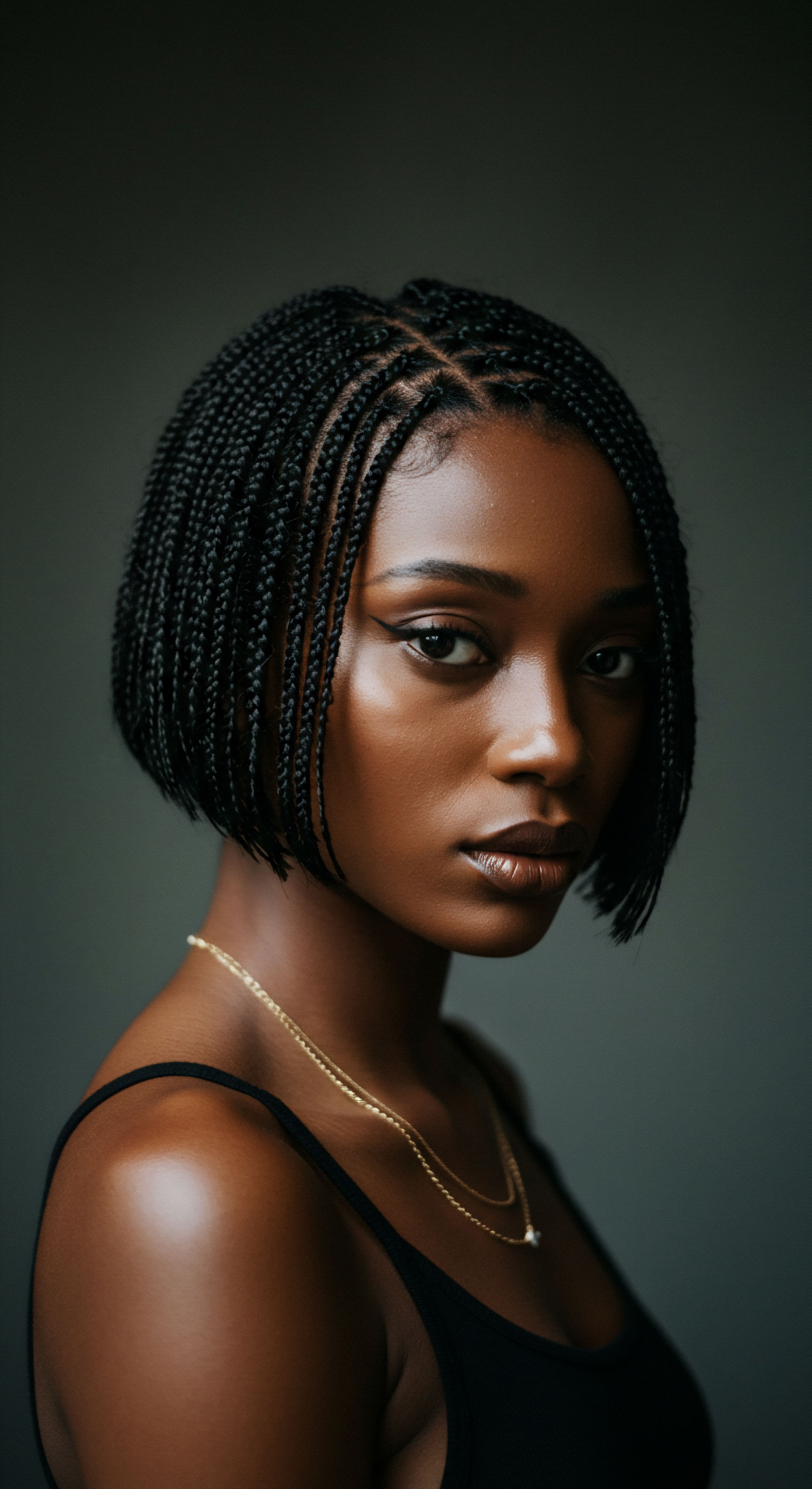
Reflection
As we conclude our exploration, it becomes clear that the connection of braids to cultural identity is not a static historical footnote, but a dynamic, living testament to human ingenuity and resilience. From the earliest markings of social standing on an ancient African head to the contemporary legislative battles for hair acceptance, braids have consistently served as powerful visual statements. They whisper stories of ancestry, declare affiliations, record journeys, and assert selfhood in the face of prevailing norms.
This continuous conversation between hair, heritage, and the individual invites us to look deeper, to see beyond mere aesthetics, and to recognize the profound narratives held within each carefully formed plait. The legacy of braids reminds us that true beauty often lies in the authentic expression of who we are, and where we come from, a wisdom softly spoken through every strand.

References
- James, Duyan. Hairtalk ❉ Stylish Braids from African Roots. Sterling Publishing Co. Inc. 2007.
- Johnson, T. L. & Bankhead, T. (2014). Black women and hair ❉ Examining the social significance of hair in Black culture. Journal of Black Studies, 45(8), 869-886.
- Robins, Gay. Hair in Ancient Egypt ❉ A Study of Gender, Status, and Identity. American Research Center in Egypt, 2017.
- Tarlo, Emma. Entanglement ❉ The Secret Lives of Hair. Oneworld Publications, 2017.
- Mbilishaka, Afiya M. Clemons, M. Hudlin, M. Warner, A. & Jones, A. (2020). Don’t Get It Twisted ❉ Untangling the Psychology of Hair Discrimination Within Black Communities. American Journal of Orthopsychiatry.
- Duncan, Monique, and Moses, Oboh. Freedom Braids. Lantana Publishing, 2024.
- Maharaj, Claudette. “Beyond the roots ❉ exploring the link between black hair and mental health.” TRIYBE, 2025.
- Lisse, Adenique. “Hair satisfaction and mental health in Black adolescent girls.” Body Image, 2025.
- Syed, M. Azmitia, M. & Cooper, C. R. (2011). Identity and academic success among underrepresented ethnic minorities ❉ An interdisciplinary review and integration. Journal of Social Issues, 67(3), 442-468.
- Synnott, Anthony. “Shame and Glory ❉ A Sociology of Hair.” British Journal of Sociology, 48(3), 381-403, 1987.